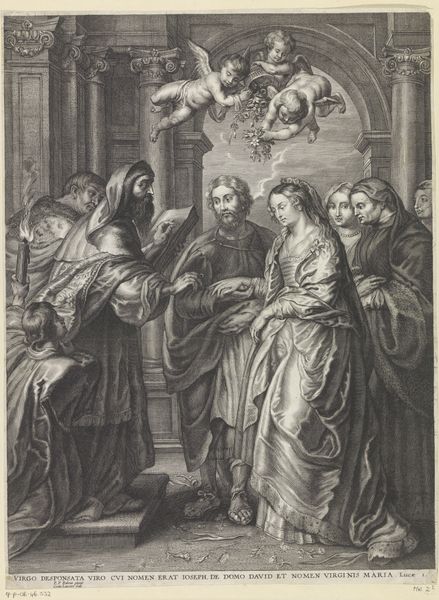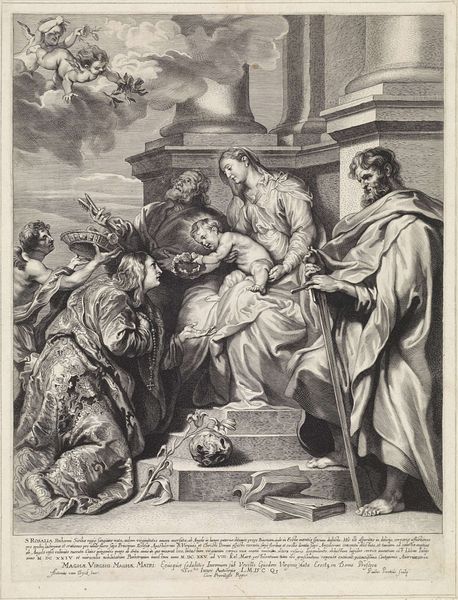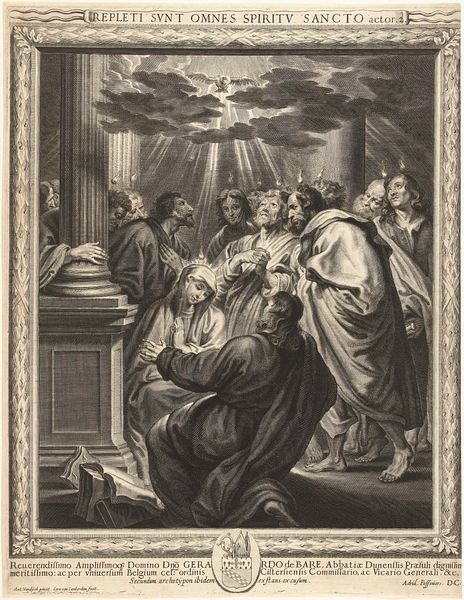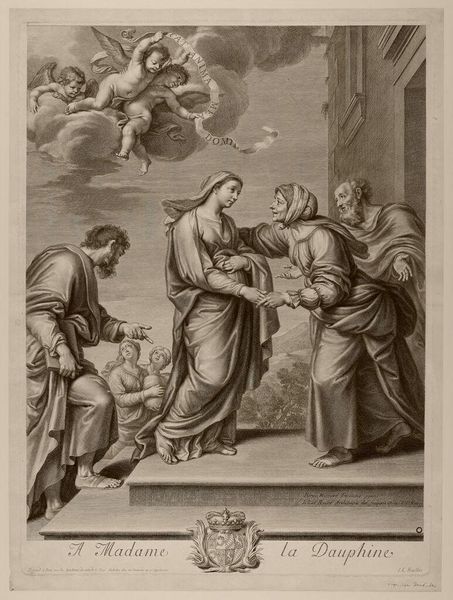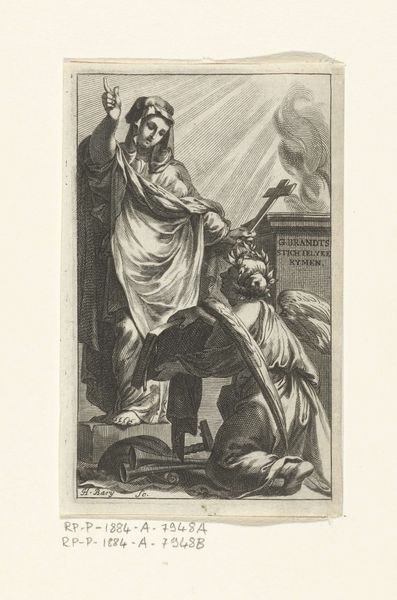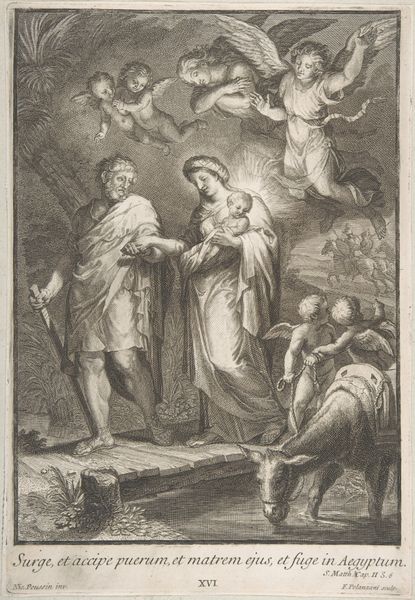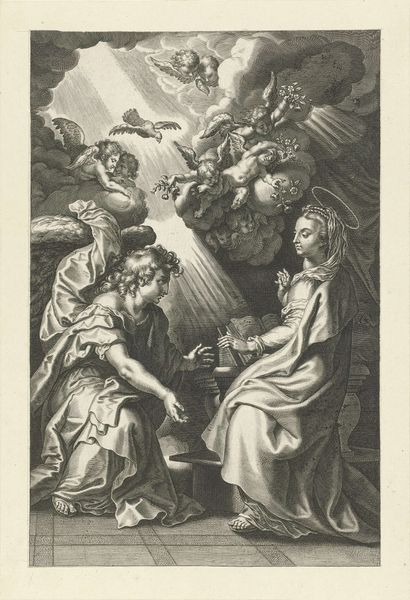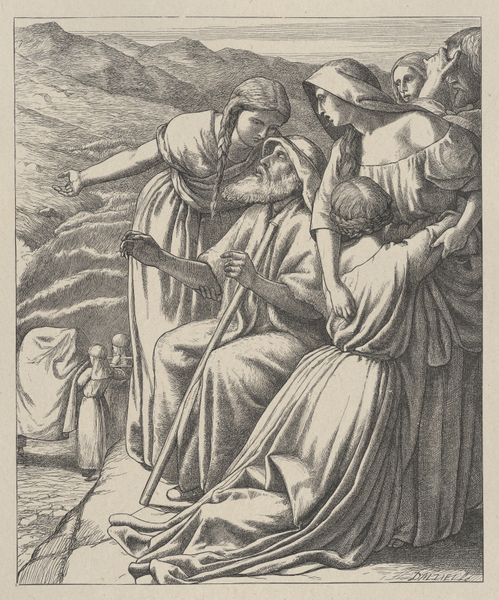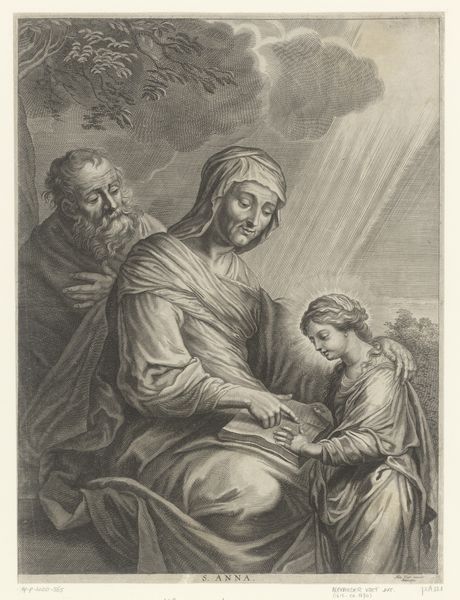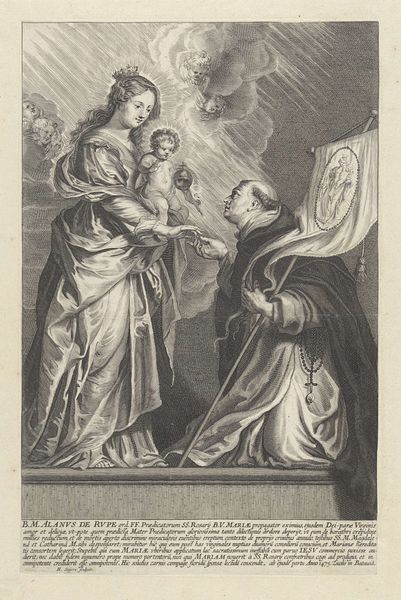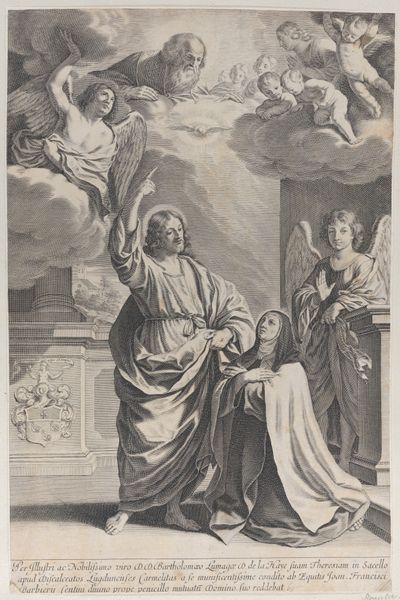
print, engraving
#
portrait
#
baroque
# print
#
old engraving style
#
caricature
#
figuration
#
chiaroscuro
#
line
#
history-painting
#
engraving
Dimensions: height 415 mm, width 286 mm
Copyright: Rijks Museum: Open Domain
This print, Maria en het Christuskind voor de H. Franciscus Xaverius, was made by Paulus Pontius, a Flemish engraver, during the 17th century. The process of engraving is essentially a mechanical one, involving the careful scoring of a metal plate. Consider the qualities of this print – the fineness of line, the gradations of tone. These were achieved through skilled labor, which involved a degree of precision and control. This would have been a laborious and time-consuming method, but it allowed for the production of multiple images, which could be widely distributed, thereby democratizing access to religious iconography. The making of prints like these also helped to establish the careers of artists like Pontius, who relied on printmaking as a primary source of income, as these images were widely collected and circulated. By understanding the material processes and the social context in which this print was made, we gain insight into the wider cultural and economic landscape of the time.
Comments
No comments
Be the first to comment and join the conversation on the ultimate creative platform.
